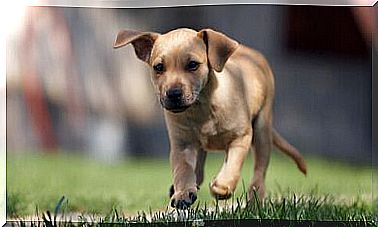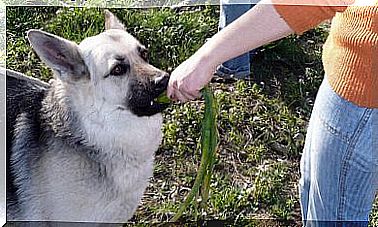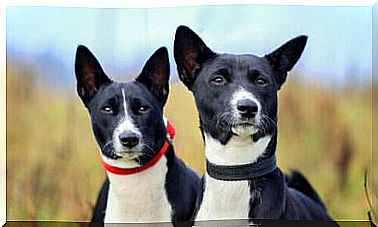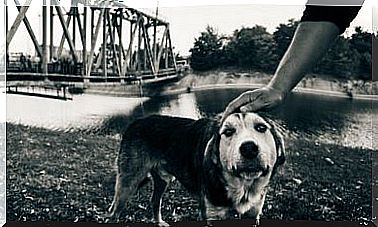Canine Arthrosis: Diagnosis And Treatment

Canine arthrosis is a degenerative joint disease and is the most common cause of chronic pain in dogs. It is produced, to a greater extent, in older dogs, but obesity means that younger dogs can also develop this disease.
The disease develops due to wear of the cartilage that covers the interior of the joints and bones, causing a loss of elasticity which, in turn, generates pain and impedes the dog’s normal mobility. This disease must be treated immediately and an early diagnosis is crucial for the dog’s quality of life.
Canine Arthrosis Diagnosis
The diagnosis of arthrosis can be difficult in its early stages, mainly because dogs tend to shift the weight from a diseased joint to a healthy one, avoiding putting pressure on the first one. Therefore, it is very difficult to notice that the dog is in pain, even for a veterinarian.
In many cases, dogs develop a limp or any change in support (such as keeping a paw raised, if they are males they start to urinate while sitting, etc.) will be done intermittently, they will be able to play and run normally, so it will not be cause for alarm at first.
However, as the disease progresses and the joint deteriorates, the lameness will become continuous and, depending on the degree of arterial degeneration, the dog will avoid movement and will show symptoms of pain when simply touching the affected joint.
Other symptoms that help us detect arthrosis can be:
- If they move slowly, are resistant to going out for a walk, they are slow to keep up with our pace;
- They have difficulty getting up or sitting down, they do it very slowly, they position themselves in an unusual way;
- Inappetence;
- Irritability, aggressiveness, nervousness, stress or insomnia; the dog does not want to be touched in the areas that are being affected by the disease.
Prevention of canine arthrosis
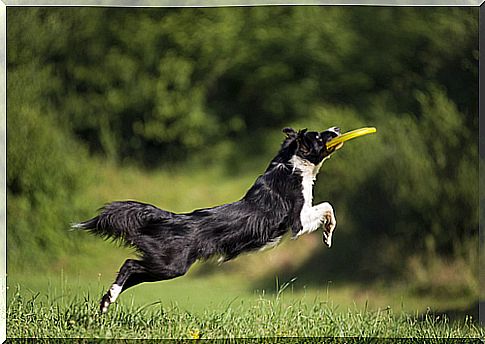
Arthrosis can be prevented through easy care during the animal’s life, some of these precautions are:
food
The dog must feed properly, especially to avoid being overweight. Dogs that suffer from obesity tend to subject their joints to an increased effort due to their body weight, thus accelerating their wear and tear. In addition, overfeeding brings other problems, such as kidney and heart failure.
It is important to feed our dog according to its needs and energy consumption, taking into account its age, breed and size. It is recommended to supplement the diet of older dogs with vitamins, to prevent them from developing problems arising from the lack of assimilation of nutrients, loss of muscle, among others.
Exercise
Dogs must exercise daily according to their physical condition and the requirements of their breed. Exercises that seek to tone and increase your muscles are suggested to keep your joints agile and healthy.
It is better for the dog to develop a light daily exercise routine than subjecting him to exhausting journeys with long breaks (For example, only on weekends).
Veterinary visits
Permanent checks must be carried out by the veterinarian so that he can assess the health of our pet. In this way, he can exercise a plan of control and supervision of different problems that the dog can develop as he grows older.
Treatment of canine arthrosis
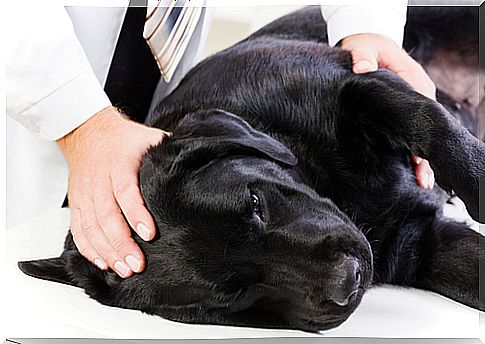
Arthrosis is a disease that has no cure, but the pain can be treated, and it is also possible to stop the process of deterioration of the joints. Basically, when arthrosis is detected by the veterinarian, he will assess your situation and will determine a plan to control the arthrosis, to prevent it from continuing to advance.
He will also prescribe medications to control pain and reduce inflammation in the joints.
The first issue that veterinarians tend to tackle in this disease is a syndrome called central sensitization, which consists in that, with the onset of continuous pain, the spinal cord produces, when faced with a painful stimulus, the perception that there is more pain.
Normally, for this type of disease, non-steroidal anti-inflammatory drugs are used, which considerably improve the quality of life of dogs suffering from this disease, allowing them to regain mobility in the affected joints and reducing painful stimuli.
In very serious cases, surgical intervention is resorted to in order to eliminate the osteophytes (abnormal bone proliferation) that obstruct the joints.


